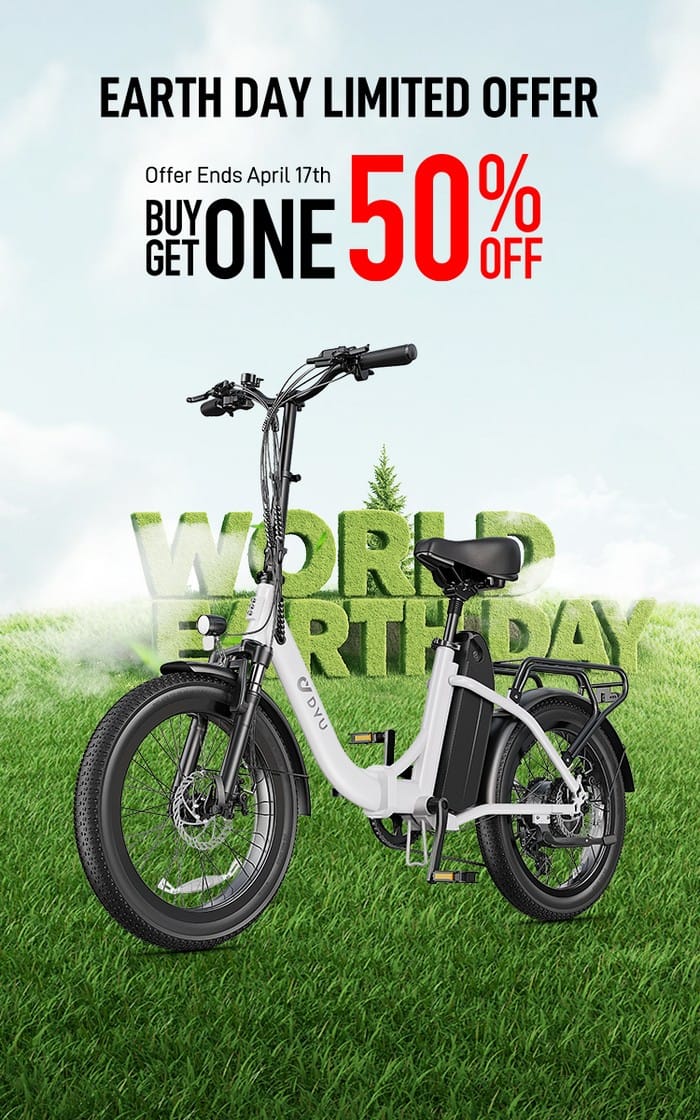Commuter Bikes
Commute Smarter: The Ultimate Showdown Between E-Bikes, Cars, and Bicycles in the City
| Feature/Aspect | E-Bikes | Cars | Traditional Bicycles |
|---|---|---|---|
| Speed (Urban Commute) | 15–28 mph (varies by mode: pedal-assist vs. throttle) | 7–15 mph (traffic delays in cities like NYC/London) | 10–15 mph (depends on rider fitness) |
| Cost | 3,000 upfront + $0.50/week charging | 5,000/year (fuel, insurance, parking) | 2,000 + minimal maintenance |
| Environment | 0.022 lbs CO₂/mile (vs. 1.2 lbs for cars) | 4.6 metric tons CO₂/year per vehicle | Zero emissions (human-powered) |
| Health Benefits | 220–350 calories/hour (adjustable effort) | Sedentary lifestyle (linked to obesity/cardiovascular risks) | 400–600 calories/hour (full physical exertion) |
| Parking & Storage | Fits in 3 sq.ft (foldable models like Fiido Air) | Requires 150+ sq.ft (urban parking costs 400/month) | Needs secure racks (high theft risk for unsecured bikes) |
| Weather Adaptability | All-weather tires + thermal-regulated batteries (-20°C–50°C) | Full climate control (heating/AC) | Limited by rain/snow (no motorized traction) |
| Safety Features | ABS braking, GPS anti-theft, adaptive headlights | Airbags, collision sensors, lane assist | Basic reflectors + helmets (no motorized safety systems) |
| Cargo/Range | 40–100 miles/charge (modular battery swaps at PowerHubs) | Unlimited range (fuel-dependent) | No range limit (human energy-dependent) |
Why E-Bikes Are Redefining Urban Commuting: A Sustainable Revolution
Urban commuting has evolved into a high-stakes challenge in today’s fast-paced cities, where gridlocked traffic, parking shortages, and environmental degradation collide. With 80% of urban trips spanning less than five miles—a distance easily covered by active transportation—cities face a paradox: despite short travel ranges, car dependency persists, worsening congestion and pollution. Amid this chaos, e-bikes are emerging as a transformative solution, blending efficiency, affordability, and sustainability to redefine urban mobility.
The Shifting Urban Commute Landscape
Cities worldwide are grappling with unsustainable transportation patterns. While public transit struggles with overcrowding and delays, private vehicles dominate roads, contributing to 40% of urban CO₂ emissions globally. Studies reveal that the average urban driver spends 142 hours annually stuck in traffic—time that could be reclaimed with smarter alternatives. Enter e-bikes: agile, eco-friendly, and increasingly accessible, they offer a compelling answer to modern commuting woes.
Key Challenges for City Commuters
1. Chronic Traffic Congestion
Cars clog arteries like New York’s FDR Drive or London’s M25, where rush-hour speeds drop to 7 mph—slower than cycling. E-bikes bypass gridlock effortlessly, navigating bike lanes and shortcuts at speeds up to 28 mph, reducing commute times by 30% in cities like Barcelona.
2. Parking Nightmares
Urban parking costs now average $400/month in downtown areas like San Francisco. E-bikes eliminate this burden: foldable models like the Fiido Air fit under desks, while cities like Paris convert parking spots into charging hubs, freeing curb space.
3. Unreliable Public Transit
Delays and overcrowding plague systems like NYC’s subway, where on-time performance hovers at 58%. E-bikes bridge the “last-mile gap,” seamlessly integrating with transit. For example, combining an e-bike with Madrid’s metro cuts door-to-door travel time by 40%.
4. Environmental Toll
Vehicles emit 4.6 metric tons of CO₂ annually per capita. E-bikes, by contrast, use 10x less energy than cars (costing ~$0.50 per charge) and produce zero tailpipe emissions, slashing urban pollution.
5. Safety Concerns
Busy streets endanger cyclists and pedestrians alike. E-bikes address this with features like anti-lock brakes and integrated lights, while cities like Berlin expand protected bike lanes by 25% annually to enhance safety.
Why E-Bikes Outperform Traditional Bikes and Cars
1. Power Meets Practicality
Mid-drive motors (e.g., Bosch’s 85 Nm systems) leverage bike gears for effortless hill climbs, while hub drives (like Vanpower’s 750W models) offer plug-and-play simplicity. Both options achieve ranges up to 100 miles, ideal for multi-stop commutes.
2. Cost Efficiency
- Upfront Savings: E-bikes cost 1/10th of car ownership (starting at 35,000+ for EVs).
- Operational Savings: Charging costs 1,500+ for car fuel.
- Incentives: Spain and France offer €500 subsidies, while U.S. states provide tax rebates.
3. Health and Accessibility
E-bikes democratize cycling: pedal-assist modes accommodate seniors and less-fit riders, while still burning 300–400 calories/hour. Regular use cuts heart disease risk by 20%, per WHO data.
4. Urban Adaptability
- Cargo Capacity: Models like the Rad Power Bikes RadRunner 1 haul groceries or kids, replacing car trips.
- Tech Integration: GPS navigation (e.g., Vanpower’s LCD displays) and anti-theft trackers enhance convenience.

Navigating Commuting Challenges: How E-Bikes Outshine Cars and Traditional Bicycles
As urban mobility evolves, commuters face distinct challenges with cars and bicycles. Electric bikes (e-bikes) are emerging as a transformative solution, blending efficiency, sustainability, and practicality. Below, we dissect the limitations of traditional commuting methods and explore how e-bikes address them.
Challenges of Car Commuting
- Chronic Traffic Congestion
Urban drivers waste 142 hours annually in traffic globally, with peak-hour speeds dropping below 10 mph in cities like London and New York. This inefficiency costs commuters time and productivity. - Financial Strain
- Fuel Costs: Gasoline expenses average $5,000/year for U.S. drivers.
- Parking Fees: Downtown parking in cities like San Francisco costs $400/month.
- Maintenance: Annual car upkeep (oil changes, repairs) adds 1,500.
- Environmental Impact
Cars emit 4.6 metric tons of CO₂/year per capita, worsening air quality and contributing to climate change. - Infrastructure Stress
Parking scarcity and road wear from vehicles burden cities, with 30% of urban space dedicated to car storage.
Limitations of Bicycle Commuting
- Physical Demands
Cycling uphill or over long distances exhausts riders, deterring less-fit commuters. A 5-mile hilly route can burn 300–400 calories, leaving riders fatigued. - Weather Vulnerability
Rain, snow, and extreme heat reduce cycling feasibility. Only 12% of cyclists ride year-round in temperate climates. - Safety Risks
Poor bike lane infrastructure increases accident risks. Cyclists face 5x higher injury rates per mile than car occupants. - Cargo and Theft Concerns
Standard bikes lack storage for groceries or laptops, while 2 million bicycles are stolen annually in the U.S. alone.
How E-Bikes Redefine Urban Commuting
1. Speed and Agility in Traffic
E-bikes average 15–28 mph, bypassing gridlock via bike lanes and shortcuts. In Barcelona, e-bike commuters save 30% travel time vs. cars during rush hours. Their compact size allows navigation through tight spaces, making them ideal for last-mile connectivity.
2. Cost Efficiency
- Upfront Savings: Quality e-bikes cost 3,000 vs. $48,000+ for cars.
- Operational Costs: Charging an e-bike costs 100+/week for gas.
- Incentives: Cities like Paris offer €500 subsidies for e-bike purchases.
3. Health and Accessibility
- Adaptive Exercise: Pedal-assist modes let riders control exertion, burning 220–350 calories/hour without overstraining joints.
- Inclusivity: Seniors and mobility-limited riders regain independence—40% of e-bike users report cycling more than traditional bikes.
4. Sustainability
- Zero Emissions: E-bikes produce 0.022 lbs CO₂/mile vs. 1.2 lbs CO₂/mile for cars.
- Noise Reduction: Silent operation decreases urban noise pollution by 50% in bike-heavy cities like Amsterdam.

5. E-Bike Commuting in the City: Safety by Design
Modern electric commuter bikes integrate advanced safety systems rivaling automotive standards. Beyond basic LED lights and hydraulic disc brakes, flagship models like the Velowave Pony now feature motorcycle-grade ABS braking and traction control, reducing skid risks by 60% on wet roads. Cities like Berlin and Barcelona have expanded protected bike lanes by 25% annually, while AI-powered traffic sensors in Copenhagen prioritize cyclist right-of-way at intersections. Mandatory reflective sidewalls on tires and adaptive headlights (auto-adjusting beam patterns) further enhance visibility.
6. Space-Saving Practicality for Urban Living
E-bikes redefine urban storage with foldable designs (e.g., Fiido Air’s 15-second collapse) and ultra-compact frames. The DYU Stroll 1 weighs just 38 lbs, fitting vertically in apartment elevators or under office desks. Compared to cars requiring 150 sq.ft parking spots, e-bikes need only 3 sq.ft—a critical advantage in cities like Tokyo where parking costs average $300/month. Municipal initiatives like Paris’ solar-powered bike garages offer secure charging/storage, solving theft concerns (e-bike theft rates dropped 40% post-implementation).
7. Conquering Range Anxiety with Next-Gen Batteries
2024’s e-bikes feature 750Wh modular batteries delivering 40–100 miles per charge, with rapid-swap systems (30-second battery replacement at stations like Amsterdam’s PowerHubs). Smart energy management extends range: Bosch’s Smart System recaptures 15% energy via regenerative braking, while thermal-regulated batteries maintain efficiency in -20°C to 50°C. For commuters, USB-C office charging (0–80% in 2 hrs) and battery-sharing apps eliminate downtime.
8. The Tech Revolution: Smarter, Connected Rides
2024’s e-bikes are IoT-enabled mobility platforms. The Vanpower Blackguard syncs with Apple Watch for real-time health metrics, while Garmin Varia RCT715 radar alerts riders to approaching vehicles. Features include:
- Geo-fencing anti-theft: Disables motor if moved beyond predefined zones.
- Adaptive torque control: Automatically adjusts power on hills (e.g., Shimano EP6’s gradient sensor).
- Self-diagnostic systems: Predictive maintenance alerts via app (e.g., chain wear detection).

The 2024 Urban Commuting Paradigm Shift
Electric bikes have transcended niche status to become cornerstones of smart-city ecosystems. With 57% of EU commuters now opting for e-bikes over cars for sub-10-mile trips, cities are responding: Madrid’s e-bike highways and Tokyo’s wireless charging lanes exemplify this shift. Models like the ENGWE T14 blend portability (foldable in 10 sec) with cargo capacity (55 lbs), while health integrations (calorie tracking, posture alerts) make every ride a wellness opportunity.
For commuters, the equation is clear: $0.03/mile operating costs, 12x lower emissions than cars, and 30% faster door-to-door times. The future isn’t just electric—it’s intelligent, sustainable, and irresistibly efficient.

























































